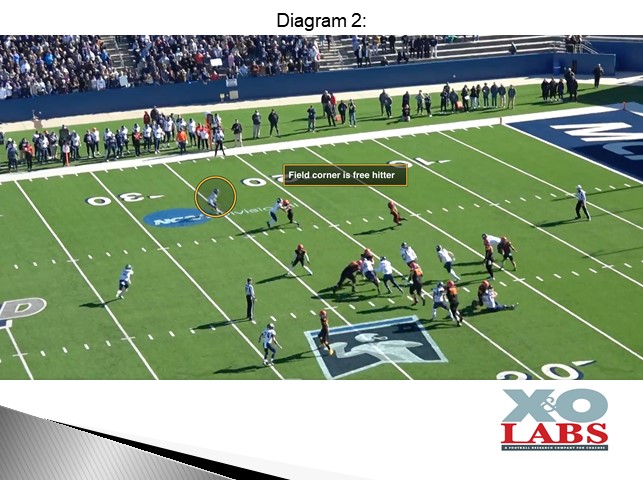By Mike Kuchar with Sam Parker
Run Game Coordinator/Offensive Line Coach
Ferris State University (MI)
Twitter: @CoachParker
Having majored in the Jet Read for most of head coach Tony Annese’s tenure, the staff at Ferris State needed a complement that could easily push the ball to the perimeter. But rather than build in traditional outside zone schemes, the Bulldogs wanted to stay true to its roots as a gap scheme team. So, the answer was using a speed sweep with a false pull. But run game coordinator Sam Parker and the offensive staff will complement the speed sweep with its traditional power read scheme based on the look they are getting from the defense. “The entire point of running outside or sweep is to stretch everyone and if you have a threat of a box run with it, that’s when you get the efficiency you need,” he said. “You get the false key with the pull. We are always going to threaten defenses with an A gap run element.”
The Advantage of Cluster Formations:
Since most of Ferris State’s jet read scheme is presented using condensed formations, it made sense for the staff to build its speed sweep around the same design. According to Coach Parker, it helped in disseminating whether or not there were numbers to the field for the speed sweep or numbers in the box to run the power read. “We look at how well they handle aligning to cluster formations,” said Coach Parker. “Can they take the perimeter sweep to the field off the table? If they do, we look at running power read back to the boundary.”
For example, since so many defenses at that level are field rotation defenses, if there are any additional numbers to the field, the call gets adjusted to power read back to the boundary. It’s an easy adjustment by the quarterback.

But Coach Parker did mention he’ll live with running the scheme to the field if he can get it run on a field corner in space.

In order to do that, both the receivers and the back need to be in constant communication on who to block on the perimeter. “We will either crack the EMLOS with the receiver or handle him with the back,” he said. “We let those guys communicate it.”









